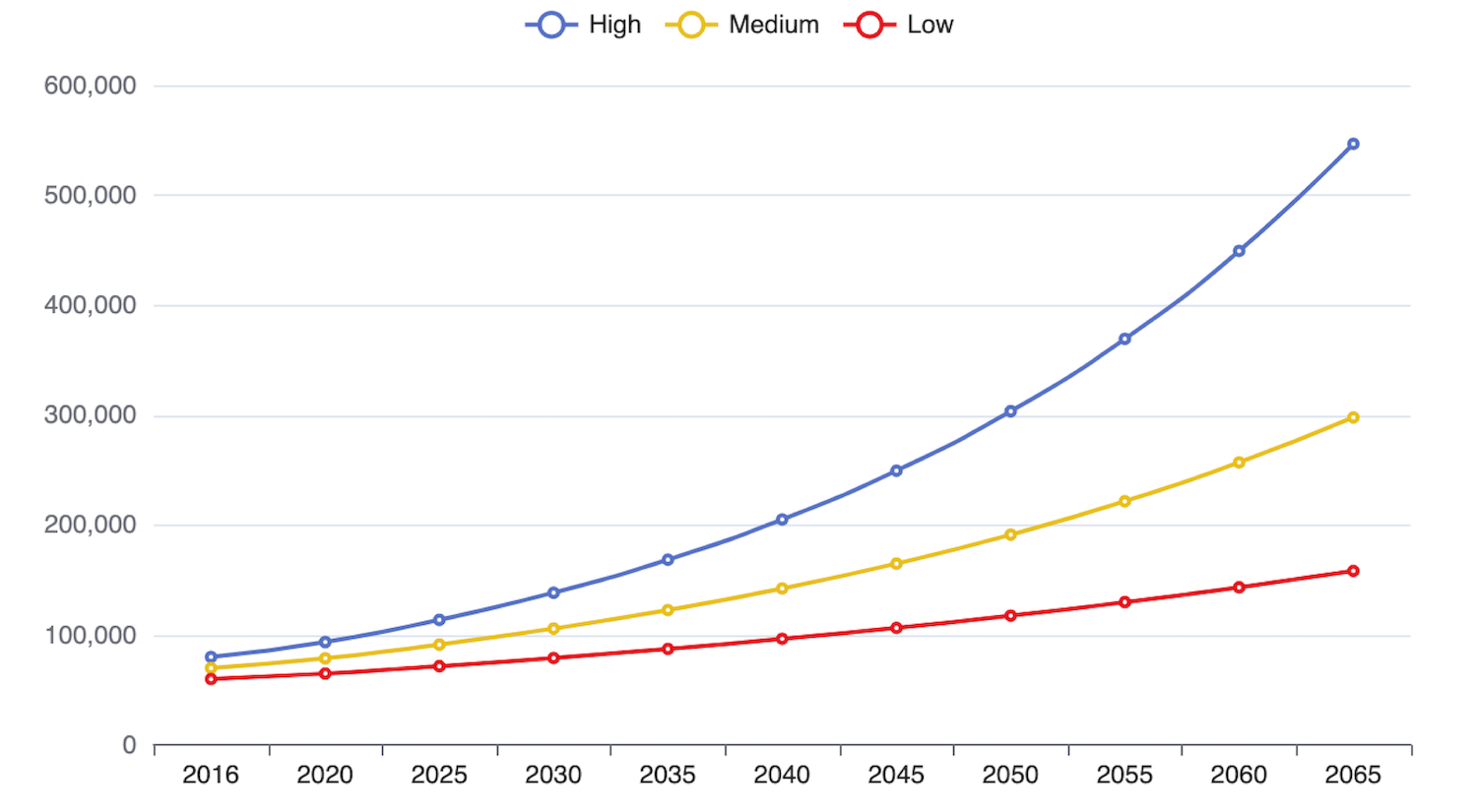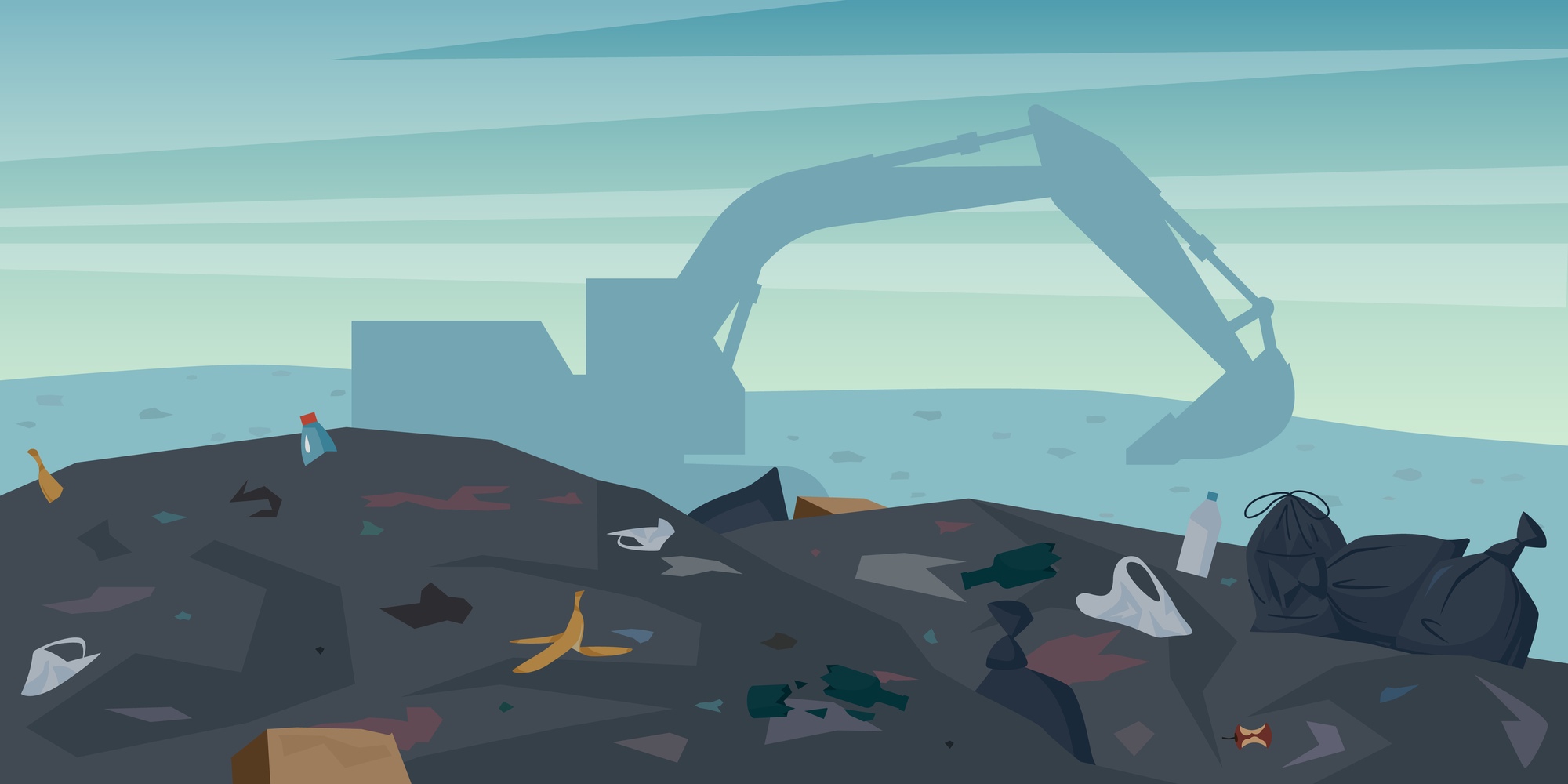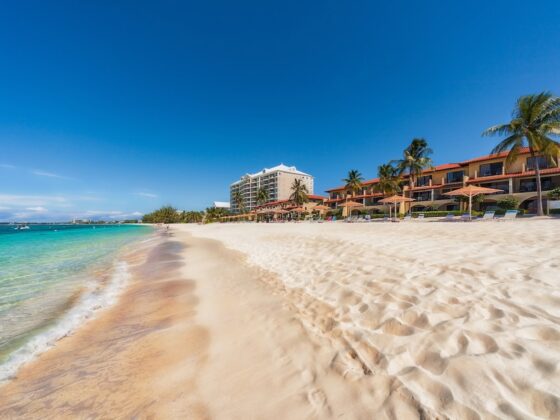On World Environment Day, June 5, 2025, as the global community rallied under the theme #BeatPlasticPollution, Cayman Islands Minister for Health, Environment and Sustainability, the Hon. Katherine Ebanks-Wilks, announced a landmark commitment to architect a “strategic plan for waste that benefits our country for generations to come.” The pledge directly confronts the long-standing crisis at the George Town landfill, locally known as “Mount Trashmore,” and comes at a critical time for the territory, which has been seeking a long-term solution since the termination of the large-scale ReGen waste-to-energy project in July 2024.
Signaling a major policy direction for the new administration, the declaration was made just thirty days after the National Coalition For Caymanians Cabinet was sworn into office, establishing waste management as an immediate and core priority. Minister Ebanks-Wilks outlined a dual approach: a long-term strategic overhaul of the nation’s infrastructure combined with an immediate call to action for the public, challenging every household to take the “small step” of reducing their garbage by one bag per week.
“I make it my pledge, as Minister for Health, Environment and Sustainability to ensure that we prioritise a solution that offers effective and affordable waste management in the Cayman Islands.” – Hon. Katherine Ebanks-Wilks
The timing deliberately positions the Cayman Islands as an active participant in the global environmental dialogue, aligning the local initiative with the UN Environment Programme’s campaign hosted by the Republic of Korea. This commitment addresses a challenge of staggering scale, as the territory deposited over 130,000 tons of waste into its landfill in 2024 alone—a figure that far exceeds earlier government projections and underscores the urgent need for the comprehensive solution that has now been promised.
Table of Contents
George Town Landfill Stats: Cayman’s Waste Crisis in Numbers

Cayman Islands vs Global Waste Production: A Stark Reality
The statistics underlying the Minister’s announcement reveal the substantial waste management challenges facing the Cayman Islands. According to a 2023 sustainability audit by the Office of the Auditor General, each person in the Cayman Islands generates approximately 11 pounds (5 kilograms) of waste daily—more than five times the global average. To put this figure in international perspective:
Daily Waste Production Comparison:
- Cayman Islands: 5.0 kg per capita daily [Office of the Auditor General, 2023]
- United States: 2.58 kg per capita daily (traditionally the world’s highest) [Global Waste Index, 2024]
- Canada: 2.33 kg per capita daily [Global Waste Index, 2024]
- Australia: 2.23 kg per capita daily [Global Waste Index, 2024]
- Global average: Approximately 1.0 kg per capita daily [UNEP Global Waste Management Outlook, 2024]
This places the Cayman Islands as potentially one of the highest waste producer per capita globally, exceeding even the United States by an astounding 94%.
Annual Waste Volume Exceeds All Projections
This high per-capita rate has led to an accelerating crisis in total waste volume. In 2016, government consultants AMEC Foster Wheeler estimated annual waste volumes were between 60,000 and 80,000 tons, with their projections suggesting the current level of waste would not be reached until 2030. However, according to government weighbridge data reported by the Cayman Compass, the George Town landfill received over 130,000 tons of waste in 2024. This real-world volume has already significantly surpassed even the most aggressive ‘High Growth’ (4%) scenario from the 2016 model, which projected only approximately 109,500 tons for the year. This trajectory validates Minister Ebanks-Wilks’ position that Cayman faces a generational waste crisis requiring swift and coordinated action.
Dwindling Landfill Capacity and Timeline
The George Town landfill, which has been operational since the 1970s, today spans approximately 58 acres. According to Cayman Islands Minister for Health and Wellness, the Hon. Sabrina Turner, approximately 780,000 cubic yards of usable space remain, with waste entering the site at a rate of around 13,000 cubic yards per month. While the landfill has been developed to support an estimated 10 to 11 years of capacity if additional areas are expanded, the currently developed footprint may reach its limit in just six years.
“The George Town landfill has approximately 780,000 cubic yards remaining based on the current rate of input of approximately 13,000 cubic yards per month,” – Hon. Sabrina Turner said in Parliament last year.
Given that recent intake levels have already surpassed all previous government projections, the margin for delay is narrowing. Minister Ebanks-Wilks personally toured the site on World Environment Day 2025, informing her assessment of the facility’s operational strain and reinforcing the urgency behind her pledge for a long-term waste management solution.
“Today, my team and I visited the George Town Landfill site – it is perhaps our most pressing and visible environmental challenge and a matter of national importance.” – Hon. Katherine Ebanks-Wilks
Global Context: The Staggering Cost of Pollution
The local challenge is a reflection of a worldwide crisis. According to United Nations Environment Programme (UNEP) data released for World Environment Day 2025, plastic pollution generates annual social and environmental costs ranging between $300 billion and $600 billion. Furthermore, UNEP research indicates that by 2040, plastic leakage into environmental systems is predicted to increase by fifty percent. This environmental threat is also a direct public health concern, as microplastics have now been detected in human blood, breast milk, and bone marrow. For an island nation, these global threats are exacerbated by immediate environmental risks, most notably the potential for chemical ‘leachate’ leakage from the George Town Landfill to contaminate delicate marine ecosystems.
Analyzing the Path Forward: Lessons from International Success Stories

The Minister’s pledge for a new strategy comes just months after the government terminated a seven-year negotiation in July 2024 for the ‘ReGen’ project, a major public-private partnership (P3) intended to create a Waste-to-Energy (WTE) plant. The ambitious plan was ultimately halted due to soaring costs and unresolved issues with its proposed power purchase agreement (PPA), ultimately resulting in a $17.7 million payout to the development consortium for previous work. This history frames the new commitment as a new chapter for the project, requiring the administration to seek alternative partners and methods for a viable long-term solution.
“I make it my pledge, as Minister for Health, Environment and Sustainability to ensure that we prioritise a solution that offers effective and affordable waste management in the Cayman Islands.” – Hon. Katherine Ebanks-Wilks
The Expert Consultation Process
The Minister’s collaborative approach to strategic development involves “dedicated senior civil servants” and “world-class researchers and policy advisors,” establishing a comprehensive planning process that draws upon both institutional knowledge and international expertise. This methodological approach aims to ensure that resulting policies will prove both technically sound and practically implementable within Cayman’s unique institutional, cultural, and financial context. The Minister’s commitment to “lead by example” by implementing sustainable practices within Ministry operations further signals that government credibility is a key component of the strategy.
Core Principle: A Financially Sustainable System
A central theme of the Minister’s vision is the creation of an “effective and financially sustainable waste system.” This principle addresses the need for solutions that can scale with Cayman’s growing population and tourism sector while maintaining long-term fiscal responsibility. The overall decision-making process will undoubtedly be guided by a comprehensive cost-benefit analysis (CBA), weighing the total financial investment against the long-term economic, environmental, and public health returns. This broad analysis will inform the more specific financial planning, where the team will prioritize solutions that demonstrate clear viability through lifecycle cost analysis (LCA).
Technology Option 1: Waste-to-Energy (WTE)
Waste-to-Energy technology remains a viable consideration for evaluation. WTE systems involve the controlled combustion of municipal solid waste to generate electrical power, a process that significantly reduces landfill volume requirements—a particularly relevant benefit given Cayman’s space constraints. However, WTE implementation requires substantial capital investment, specialized technical expertise for operations, comprehensive environmental monitoring, and carefully structured financial agreements.
Technology Option 2: Advanced Recycling and Circular Economy
Advanced Material Recovery and Recycling systems offer an alternative pathway focused on maximizing resource extraction from the waste stream. These systems align with circular economy principles advocated by the United Nations and can process complex plastic polymers and other materials that traditional recycling methods cannot handle effectively. This approach has the potential to address a significant portion of the waste stream while creating economic value from recovered materials.
Technology Option 3: Organic Waste Management
Comprehensive management of organic waste through large-scale composting and anaerobic digestion presents another critical technological pathway. Given that organic materials (food and yard waste) typically represent 30-40% of municipal waste in the Caribbean, dedicated processing facilities could substantially reduce overall landfill volumes while producing valuable soil amendments for agriculture or biogas for energy.
The Integrated Approach: Lessons from Global Leaders
Among the various models under consideration, hybrid integrated systems—those combining multiple technologies—are widely recognized as a sophisticated option. These systems allow territories to tailor waste processing solutions based on local material streams, infrastructure capacity, and economic priorities. The Republic of Korea, which hosted World Environment Day 2025, has successfully implemented such an integrated system. Their comprehensive plastics strategy addresses every stage from production design through consumption and final processing, providing a powerful model for how Cayman could combine several technological solutions into one cohesive, effective national strategy. Successfully implementing such a system often requires robust policy tools, including a formal Strategic Environmental Assessment (SEA) to guide planning and policies like Extended Producer Responsibility (EPR), which holds manufacturers accountable for the entire lifecycle of their products.
A Community Effort: The Role of Residents, Business, and Industry
The success of any new national waste strategy will depend on coordinated participation from the community, private sector, and government. While the Minister’s pledge has brought renewed policy focus to the issue, many stakeholder groups, ranging from environmental advocates to commercial developers, have long expressed sector-specific concerns about landfill management, waste diversion capacity, and the need for infrastructure reform. These ongoing positions continue to shape the expectations for future policy design and implementation.
The Public’s Role: An Immediate Call to Action
Concurrently with the development of the long-term strategy, Minister Ebanks-Wilks issued a pragmatic and immediate call to action to mobilize the entire community. She introduced the “One-Bag Challenge” with a direct appeal:
“Today, on World Environment Day, I invite you to have an honest look at the amount of waste your home is producing. I challenge you, to take small steps by reducing your household garbage disposal, by one bag per week. This small step, will give our landfill more capacity, which then provides the Government with time to properly plan for a robust waste management system.” – Hon. Katherine Ebanks-Wilks
This initiative was positioned not as a final solution, but as a crucial, short-term measure to grant the landfill additional capacity. This appeal to public participation was intentionally rooted in Caymanian cultural identity and the traditional value of resourcefulness.
Environmental Community Response
Environmental organizations have continuously raised concerns about the George Town landfill’s effects on marine ecosystems, air quality, and groundwater. For example:
- The 2016 National Solid Waste Management Policy classified the landfill as “aging, non-engineered and increasingly full.”
- The Department of Environmental Health (DEH) has confirmed that the site remains unlined, increasing the risk of leachate contamination.
- Plastic Free Cayman and similar groups have consistently highlighted the impact of plastic waste, especially its proximity to the North Sound and potential effects on coral reefs.
While some equipment upgrades, like new compactors introduced in 2023, have reduced surface fires, stakeholders continue to emphasize the need for upstream reduction, scalable recycling systems, and landfill closure timelines.
Many environmental advocates also stress the importance of grassroots community engagement as a pathway to achieving lasting change. Public education, volunteer-led cleanups, and neighborhood waste initiatives are seen as critical complements to policy reform.
Tourism Industry: Protecting the Economic Foundation
Tourism stakeholders have voiced long-standing concerns about the landfill’s location, appearance, and potential to affect visitor experience. Marine health, visible pollution, and stormwater runoff near coastal areas, especially along Seven Mile Beach and the North Sound, are recurring concerns.
The Environmental Impact Assessment (EIA) for the former ReGen project (2021) cited odors, litter, and surface runoff as issues with potential to impact both neighboring communities and tourism activity.
Organizations such as the Cayman Islands Tourism Association (CITA) have underscored that preserving beach quality and reef ecosystems is critical not only for environmental reasons but also to protect Cayman’s tourism-dependent economy.
According to the Caribbean Tourism Organization, island destinations that neglect environmental infrastructure risk reduced competitiveness in a global market where travelers increasingly prioritize sustainability.
Construction & Development: Opportunities in Waste Reduction
The construction and development sector contributes a substantial share of the waste stream through construction and demolition (C&D) debris. Ongoing conversations in the industry emphasize:
- The need for localized recycling facilities for materials like concrete, wood, and metal
- Economic potential in waste diversion, including crushed concrete reuse for road base or public infrastructure
- Policy clarity around tipping fees, regulatory enforcement, and incentives for sustainable waste management practices
The 2021 EIA for the ReGen project and the 2016 Outline Business Case both identified construction waste as a high-priority stream for diversion. Industry professionals continue to echo those recommendations today, calling for scalable systems that reduce pressure on the landfill while fostering green-sector job creation.
Financial Sector: Enhancing Cayman’s Green Reputation
Within the financial services industry, there is growing recognition that environmental infrastructure, including national waste management systems, plays a role in Cayman’s global competitiveness. As one of the territory’s primary economic engines, the sector increasingly engages with Environmental, Social, and Governance (ESG) frameworks that assess not only company practices, but also jurisdictional performance.
This alignment was noted in a 2023 briefing by the Cayman Islands Monetary Authority (CIMA), which emphasized the territory’s opportunity to demonstrate leadership in sustainability governance as investor expectations continue to evolve. Firms managing ESG-linked assets, green bonds, and portfolios benchmarked against the UN Principles for Responsible Investment (UNPRI) or the EU Sustainable Finance Disclosure Regulation (SFDR) are paying closer attention to host jurisdictions’ environmental infrastructure—including recycling, waste processing, and landfill engineering.
Stakeholders in Cayman’s finance and legal sectors have raised these considerations in public forums such as the Cayman Finance Sustainable Investing Briefing (March 2024), where panelists discussed the reputational benefits of investing in physical infrastructure that supports the territory’s green credibility. Commentary in the Cayman Compass (April 2024) echoed these views, with legal professionals and fund administrators noting that enhanced environmental stewardship could serve as a differentiator in an increasingly competitive offshore market.
While no sector-wide statement has been issued on waste infrastructure, several firms have independently adopted internal ESG criteria that reflect concern for national sustainability performance. These include environmental due diligence on physical risks, resource efficiency, and infrastructure resilience. In this context, a modernized, transparent, and circular waste system would support both investor confidence and Cayman’s long-term policy credibility.
Professionals across the industry have suggested that integration of waste management reform into broader environmental initiatives, such as carbon accounting, renewable energy targets, and coastal protection, could reinforce Cayman’s image as a jurisdiction aligned with global sustainability norms. This would not only benefit ESG-focused funds and companies operating in Cayman but may also support the territory’s ambitions in attracting responsible investment and international partnerships.
A Call for Phased and Practical Implementation
Across Cayman’s business landscape, there is consistent agreement that any future waste management reform must be phased, achievable, and guided by ongoing stakeholder input. Following the discontinuation of the Dart-led ReGen waste-to-energy initiative in July 2024, after nearly a decade of negotiation, many businesses have emphasized the importance of transparent timelines, stable cost structures, and realistic rollouts to avoid disruption of essential services.
In a Cayman Islands Government press release issued in July 2024, the Ministry of Sustainability and Climate Resiliency confirmed the termination of the ReGen project, citing unresolved issues with its power purchase agreement and cost implications. This outcome underscored the private sector’s calls for reforms that prioritize financial accountability and long-term viability.
Organizations such as the Cayman Islands Chamber of Commerce have long advocated for clear transition planning in large-scale infrastructure changes. In policy briefings published between 2022 and 2024, the Chamber emphasized the need for public-private collaboration, benchmark-driven implementation, and reform pathways that avoid overburdening small and medium-sized enterprises.
During stakeholder consultations for the ReGen project’s Environmental Impact Assessment (EIA), held by the Department of Environmental Health in 2021, participants, including developers, utilities, and commercial operators, raised key concerns, including:
- The importance of predictable regulations and adaptation timelines,
- The need for waste diversion policies that do not disproportionately affect small businesses,
- Support for tiered tipping fees, recycling incentives, and private-sector participation in infrastructure development.
Additional commentary published by the Cayman Compass and presented in Chamber of Commerce newsletters from 2023 reinforced the private sector’s preference for gradual implementation supported by stakeholder consultation and cost-benefit transparency.
The overarching view across sectors is that successful reform must be operationally feasible and aligned with both economic competitiveness and environmental responsibility, a principle reiterated in post-ReGen sustainability briefings and industry forums.
Defining Success: The Government’s Accountability Framework
The success of Cayman’s next-generation waste management system will ultimately depend on its alignment with transparent, measurable benchmarks. These criteria reflect principles from international best practices, core elements of the Minister’s public statements, and key concerns raised in previous environmental assessments and audits.
Environmental Safety Standards
To ensure environmental integrity, the strategy must include:
- Continued groundwater monitoring and containment
- Effective methane capture using dedicated methane flare stacks
- Soil contamination prevention
- Impact reduction on marine ecosystems, particularly those bordering the North Sound
Capping initiatives using geosynthetic materials, implemented in sections of the current landfill, must be expanded upon. These benchmarks align with environmental concerns raised in the 2016 Outline Business Case and subsequent audits by the Office of the Auditor General.
Financial Sustainability Metrics
Minister Katherine Ebanks-Wilks has committed to a financially viable solution. This means evaluating:
- Life-cycle costs of waste facilities,
- Opportunities for material recovery or renewable energy,
- Efficient operational models, and
- Long-term value for public investment.
These criteria reflect guidance from the Public-Private Partnerships framework under which ReGen was initially negotiated.
Public Health Protection
The system must demonstrably protect public health by addressing:
- Air quality near waste processing sites
- Groundwater contamination risks
- Vector control and pest-related disease mitigation
- Safe handling of medical and hazardous waste
These are long-standing areas of concern documented by the Department of Environmental Health and supported in EIAs tied to the ReGen project.
Operational Effectiveness Metrics
Success of feasible effective waste management system will require:
- Waste diversion benchmarks
- Quantified reductions from campaigns like the “one-bag challenge”
- Clear data on household and business waste reduction
- Efficient facility throughput
Such metrics are essential to meeting both short-term and generational targets.
Realistic Implementation Timelines
Given that the George Town landfill has 6 to 11 years of remaining capacity (DEH estimate), project milestones must include:
- A clear business case timeline
- Construction and commissioning deadlines
- Transition schedules that maintain waste services throughout
These considerations reflect lessons learned from the ReGen negotiation process and underscore the importance of clearly defined timelines in large-scale infrastructure development.
Long-Term Resilience and Adaptability
A lasting waste management system must be adaptable, capable of:
- Integrating new technologies (e.g., improved recycling, AI sorting)
- Withstanding climate-related disruptions
- Scaling to meet the demands of a growing population and expanding tourism economy
While not all these benchmarks are formally codified yet, they represent best practices from leading waste management jurisdictions and offer a path toward credible, accountable environmental governance.
Frequently Asked Questions (FAQ)
This section serves as a practical guide to the core issues discussed in this report. It provides concise, standalone answers to critical questions regarding the George Town Landfill’s status, the Minister’s policy pledge, the public’s role in the solution, and the timeline for future government action.
What exactly did Minister Katherine Ebanks-Wilks promise for Cayman’s waste management?
Minister Katherine Ebanks-Wilks pledged on World Environment Day 2025 to deliver a comprehensive “strategic plan for waste that benefits our country for generations to come.” This includes both immediate community action through a “one-bag challenge” and long-term infrastructure development to create a sustainable solution for the George Town Landfill.
When will the detailed waste management strategic plan be released?
The Minister promised to share detailed strategic plan information “in the coming weeks” following her announcement on June 5, 2025. The timeline is considered critical given that the landfill continues to fill at a rapid pace.
What happened to the ReGen waste-to-energy project?
ReGen was the name for a major public-private partnership to create a modern Waste-to-Energy (WTE) facility. After seven years of negotiations, the government officially terminated the project agreement in 2024, citing soaring costs and other unresolved issues, which included a final payout of $17.7 million to the developers.
Why is the George Town landfill called “Mount Trashmore”?
Local residents informally dubbed the landfill “Mount Trashmore” due to its massive, visible scale. The name reflects deep community awareness of the crisis and the facility’s prominence in the local landscape after accumulating waste from multiple generations.
How much George Town landfill capacity remains and for how long?
According to the Cayman Islands Department of Environmental Health, the George Town landfill has approximately 780,000 cubic yards of space remaining. At the current rate of 13,000 cubic yards of waste per month, this provides an estimated six years of capacity within the currently developed area. If expansion zones within the site are utilized, the landfill could potentially accommodate waste for 10 to 11 years. However, actual waste volumes have already exceeded earlier government projections, raising concerns that these timelines may be overly optimistic without a new national waste management plan in place.
What is the “one-bag challenge” in the Cayman Islands and how can I participate?
The “one-bag challenge” is an initiative asking every household in the Cayman Islands to reduce its weekly garbage disposal by one bag. Residents can participate through more conscious consumption choices, better recycling habits, composting food scraps, and choosing products with less packaging.
How can reducing one bag per week actually help with a 130,000-ton crisis?
While individual action alone cannot solve the systemic crisis, the collective impact of thousands of households reducing waste can significantly extend the landfill’s lifespan. This buys the government critical time to develop and build the long-term infrastructure solution. The challenge also builds community engagement essential for long-term behavioral changes supporting environmental protection.
What can local businesses do to support the waste reduction initiative?
Local businesses can contribute by reducing their own operational waste, implementing comprehensive recycling programs, and innovating with their products and services (e.g., offering refills or less packaging). They can also partner with service providers who prioritize environmental goals to help them meet their objectives.
What happens if the George Town landfill reaches capacity before a new system is ready?
Complete facility exhaustion of George Town landfill before alternative solutions become operational would constitute an environmental and public health emergency requiring immediate and likely very costly intervention. Building on the planning foundation laid during the ReGen project, current timelines will be vital in transitioning to a new waste management system without service interruption.
How will the Cayman Islands Government measure success of a new waste strategy?
Success will be measured against several key benchmarks, including: improved environmental safety (air and water quality), long-term financial sustainability, public health protection, and operational effectiveness in demonstrably reducing waste volumes.
Glossary of Key Waste Management Terms
To aid understanding, here is a glossary of key local, technical, and policy terms used in the discussion of waste management in the Cayman Islands.
Local & Crisis-Specific Terms
George Town Landfill: The primary municipal solid waste disposal facility in Grand Cayman, serving the Cayman Islands and currently managing over 130,000 tons of waste annually.
Mount Trashmore: The local nickname for the George Town landfill, referencing its massive visible scale after accumulating waste from multiple generations.
One-Bag Challenge: A government initiative asking residents to reduce their household waste by one bag weekly to extend the landfill’s lifespan.
ReGen Project: The former name for the Cayman Islands’ proposed waste-to-energy development project with a Dart-led consortium, which was terminated in 2024.
Waste Management Technologies
Advanced Material Recovery: Sophisticated waste processing systems that maximize resource extraction from waste through automated sorting, cleaning, and remanufacturing of recyclable materials.
Anaerobic Digestion: A biological process that breaks down organic waste in an oxygen-free environment to produce biogas energy and nutrient-rich soil amendments.
Circular Economy: An economic system designed to eliminate waste through the continuous reuse, recycling, and regeneration of materials in closed-loop cycles.
Geosynthetic Materials: Engineered polymer products used in modern landfill construction to prevent contamination, including impermeable liners and drainage systems.
Hybrid Integrated Systems: Waste management approaches combining multiple technologies like recycling, composting, and energy recovery in coordinated operations.
Methane Flare Stacks: Combustion systems that safely burn methane gas produced by decomposing landfill waste to prevent its atmospheric release.
Waste-to-Energy (WTE): Technology that converts municipal solid waste into electricity through controlled, high-temperature combustion, significantly reducing landfill volume.
Policy & Government Terms
Cost-Benefit Analysis (CBA): A systematic process for calculating and comparing the total costs and potential benefits of a major project or decision. The analysis often includes assigning monetary values to both financial and non-financial factors like public health and environmental protection.
Extended Producer Responsibility (EPR): A policy approach requiring manufacturers to manage the entire lifecycle of their products, including post-consumer disposal and recycling.
Life-Cycle Analysis (LCA): A comprehensive assessment of all costs associated with a project or asset throughout its entire life—from acquisition and construction through operation, maintenance, and eventual decommissioning.
Power Purchase Agreement (PPA): A long-term contract defining the terms for electricity sales, pricing, and delivery between an energy producer (like a WTE plant) and a utility.
Public-Private Partnership (P3): A contractual arrangement between a government agency and a private-sector company to finance, build, and operate public infrastructure projects.
Strategic Environmental Assessment (SEA): A systematic evaluation of the environmental implications of proposed policies, plans, and programs before they are implemented.
Global Environmental Terms
#BeatPlasticPollution: The United Nations Environment Programme’s 2025 World Environment Day campaign theme, focusing on ending plastic pollution through collective global action.
Microplastics: Plastic particles smaller than 5 millimeters that contaminate ecosystems and human bodies as larger plastics break down in the environment.
UNEP: The United Nations Environment Programme, the leading global environmental authority that promotes sustainable development and environmental protection.
World Environment Day: The annual June 5th United Nations observance for raising awareness and encouraging action on pressing global environmental challenges.
A Note on this Article
This analysis was researched and produced by the editorial team at Complete Clean as part of our commitment to community education. As a trusted provider of eco-friendly residential and commercial cleaning services in the Cayman Islands, we believe a sustainable environment is the foundation for a truly healthy home. We are proud to support the national dialogue on waste reduction through this report, our own sustainable business practices, and ongoing environmental partnerships.






